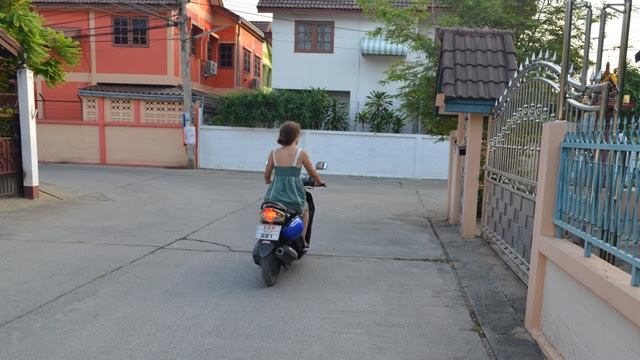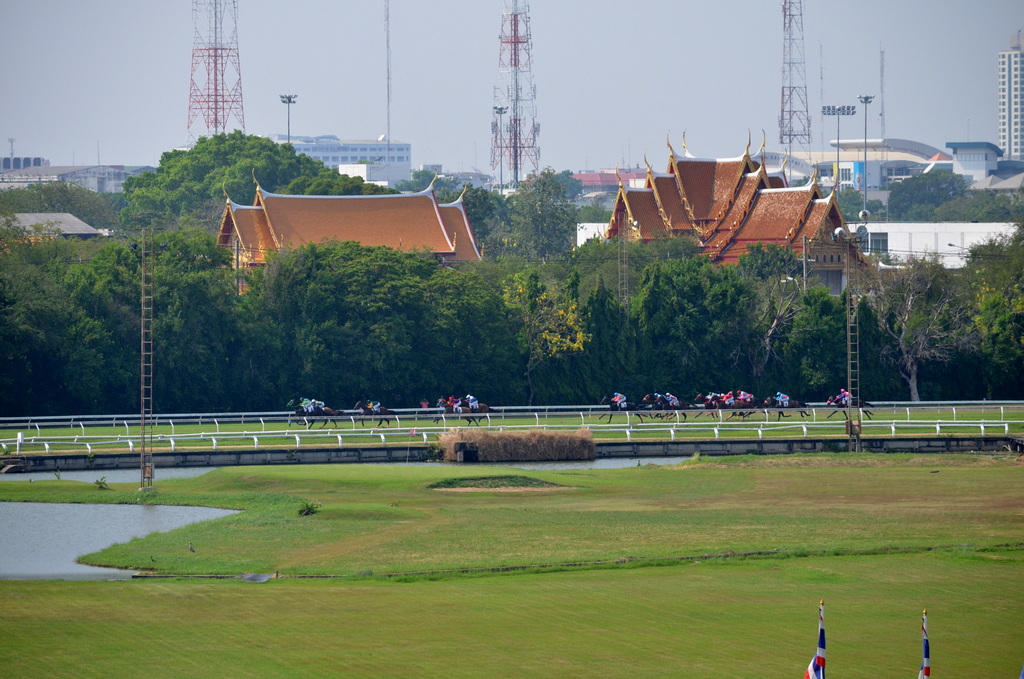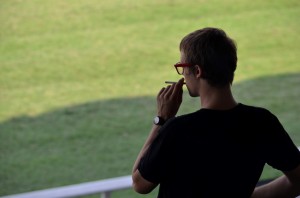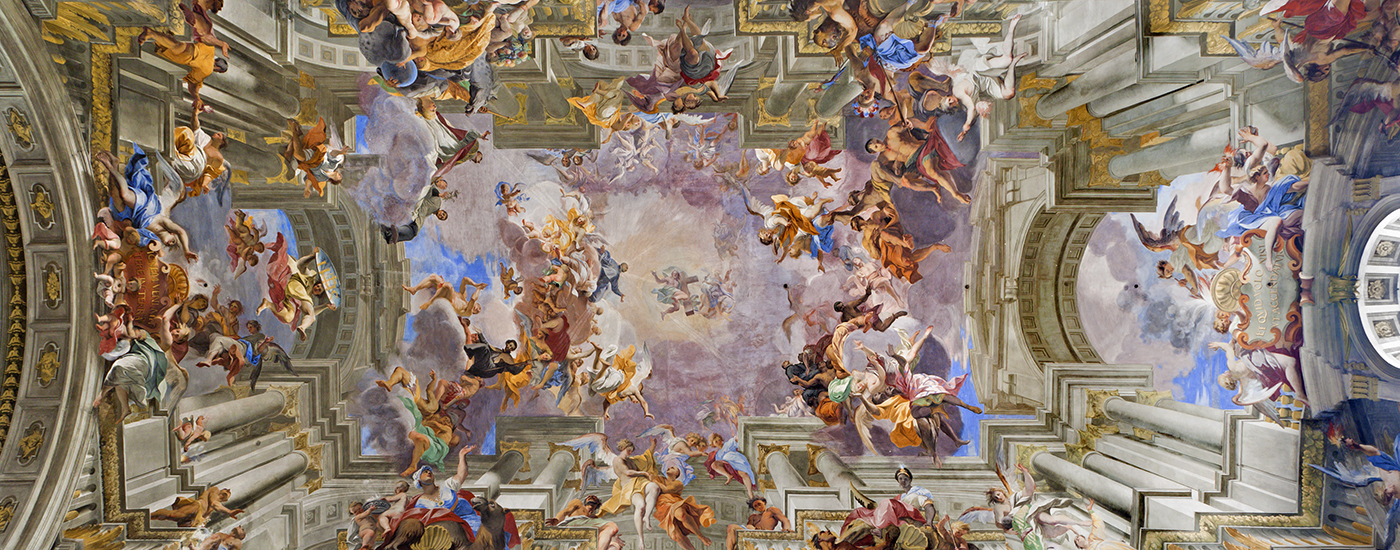A father’s observations on how his daughter’s travels abroad transformed her from a shy homebody to a confident adventurer. The story is here
Category Archives: Travel
Elle.com: Emmylou Harris Is Ready to Do Something About the Worst Humanitarian Crisis Since World War II
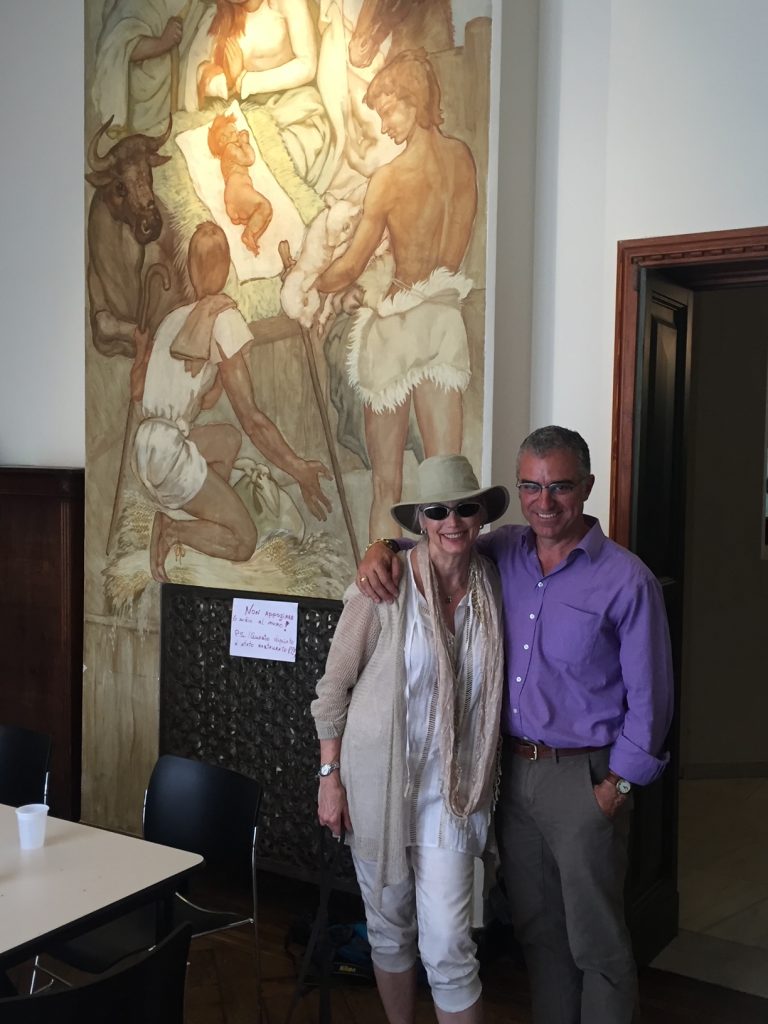
Technically, this Q&A for the famous fashion magazine (website) Elle.com is not a travel story. But my subject and I certainly had to travel a long way to meet up and talk in Rome, Italy.
Emmylou Harris, the iconic queen of country music, had traveled from her home in Nashville to see how she could do her part to alleviate the worst humanitarian crisis in decades; I had traveled from my home in Greensboro, N.C., to lead a summer session in foreign affairs reporting for a dozen amazing aspiring journalists, all women, from Wake Forest University.
It all came about because my good friend in Rome, Jill Drzewiecki with the Jesuit Refugee Service, had organized Emmylou’s visit as a potential fundraiser to help the wave after wave of immigrants flooding Europe in the summer of 2016, especially Italy. Jill asked if I would interview Emmylou and write a story. Yes, please, was my immediate response. Another friend at Elle, features editor Laura Abraham, opened the door to this story. I wrote two others, including one for Mongabay!
“I’m just a tiny part, a tiny drop,” she told me of her fundraising through music idea that was just forming. “But who knows what we can accomplish. I mean, how can you see so much pain and suffering and think that it’s normal? It’s not normal. But you have to have hope. You have to believe. You have to feel like you can make a difference.”
Emmylou and I talked for about an hour on the streets of Rome as the group she was with was touring a part of the city frequented by immigrants and never tourists. She was warm, candid and easy to talk with. That evening, I was invited to a rooftop concert by Emmylou at the home of the U.S. Ambassador for the UN Agencies. Me, a few other friends and about 50 priests. What a night. What a fabulous human being.

JRS/JACQUELYN PAVILON
At the races in Bangkok
On a Sunday afternoon, an American traveller discovers a favourite Thai pastime: racing horses at the Royal Turf Club — Four Seasons Magazine.
My wife and I visited our daughter Emilia in Thailand in March 2013 when she was there as an elementary school teacher. During our first weekend there, she and her friend Ian showed us a side of Bangkok beyond Buddhas, tuk-tuks and Khao San Road. They took us to one of the city’s two race tracks. It was an incredible experience, and Four Seasons Magazine bought the story. The story can be read here.
Excerpt: Ian goes to the rail to study the horses. He’s channeling Bukowski with a smoke in one hand, a whiskey in the other. I hang behind him, taking in the scene. The lush grass track is bordered by a row of blooming rose bushes. The infield has ponds, palm trees and a par-3 golf course. The jockeys in their colourful silks look young enough to be my daughter’s middle school students. And, as if to emphasize that we’re a long way from Churchill Downs, the peaked rooflines of the lavish Marble Temple shimmer in red just beyond the first turn.
Roman Holiday: Three Spectacular Domes
In this travel story, printed in a Wells Fargo custom magazine, I write about three of my favorite domes in Rome. There are hundreds of them, of course, and favorites can shift from day to day. But these? They are always near the top, and always worth visiting again and again.
Roman Holiday: Three Spectacular Domes
By Justin Catanoso
It happens every time I visit Rome. My pulse quickens as I near the city’s historic center. It’s not the chaotic traffic that has my blood pressure rising, nor the anticipation of one marvelous meal after another. Like a lover separated from his partner for too long, my heart races at the first sight of Michelangelo’s masterpiece, the dome of St. Peter’s Basilica.
There it is, tall and majestic, off in the distance, across the Tiber River, high on a hill. It dominates this ancient skyline and announces in no uncertain terms that you are entering a place of architectural wonders.
Rome is a city of domes. There are scores of them topping churches and cathedrals, baths and basilicas. They are visually arresting from street level. But with three domes in particular, a special experience awaits you if you get closer, if you look closely or if you’re there at the right time.
Take the steps. Resist the urge, after a long wait in line, to go directly into St. Peter’s cavernous interior. Instead, shell out 5 euros and ascend the 551 steps to the cupola atop the dome. Midway up, you will enter a walkway that circles the famous main alter of St. Peter’s far below. It feels a little bit like heaven there. Light streams in through 16 tall windows.
Unseen from the floor, but now at eye level, a ring of plump cherubs in gold and silver mosaics by Baroque artist Cavaliere D’Arpino surround you. Before reaching the top, wander the roof of the basilica. Only there can you see the carved coat of arms of Pope Sixtus V – lions roaring above garlands of pears and flowers – around the base of the dome. It’s an apt honor. Sixtus, who made sure Michelangelo’s design was strictly followed, died the year the dome was completed, 1590.
Don’t be fooled. When is a dome not exactly a dome? When it’s tromp l’oeil, or French for optical illusion. The grand Church of St. Ignatius of Loyola, in the historic center of Rome, was supposed to have an imposing dome to crown its sanctuary. It was never built. The casual observer would never know it. Baroque artist Andrea Pozza, working in St. Ignatius in the late 1600s, was a master of tricking the eye. The nave ceiling fresco appears to open directly to the sky above.
Beyond the nave is what looks like the dimly lit vault of a dome. Eight marble ribs appear to arch upward to support a windowed cupola. It’s only when you walk in farther and stand beneath the “dome” that you realize you’ve been fooled. There’s no dome, only a huge round canvas stretched flat and painted to look like one.
Raining roses. It is quite natural, when standing inside the Pantheon in Rome, to stare transfixed at the nearly 2,000-year-old ceiling of the dome. It’s a marvel of advanced architectural achievement from an ancient world. I’m always astonished by its precise roundness, its honeycombed beauty, its unblinking oculus. I often think the sight is so powerful that it cannot be improved upon.
But on Pentecost Sunday, which comes seven weeks after Easter, it happens. During a long, elaborate Mass, Roman firemen clamor on top of the dome to the lip of the oculus with huge bags of red roses pedals. As the Mass ends and music swells, the firemen empty their bags to a collective gasp of excitement. When I was there in June, a thick shaft of light angled through the oculus. Rose pedals shimmered and fluttered through the light. People reached to grab as many pedals as they could.
All by itself, any day of the week, the Pantheon is one of Rome’s most incredible sights. But in one burst of color and magic that lasts a few minutes just once a year, the Pantheon and its glorious dome are rendered even more incredible.
The power of journals: Reliving the Lewis and Clark expedition

I wrote in September 2014 about two of my favorite characters from history — explorers Lewis and Clark — and a thing we have in common: keeping journals. Here’s the link.
Excerpt: “I must admit that I’m as captivated by Lewis’ pen strokes as his paddle strokes. He was and remains the ultimate journalist, producing vivid descriptions of everything from the wingspan of a white pelican to the psychological and physical condition of his men (“. . . many of them have feet so mangled and bruised with the stones and rough ground . . . that they can hardly walk or stand . . . still they remain perfectly cheerful”). His language is elegant and precise — sharp as a photograph and just as telling.”
AOL Travel: Popes John Paul II, John XXIII: A Saint’s Cousin on Being a Pilgrim in St. Peter’s Square for a Canonization

On the occasion of Pope Francis canonizing two of his beloved predecessors in April 2014, Zach Everson at AOL Travel asked if I would write about story about the spectacle of canonization in Rome from the perspective of someone who had a good reason in 2005 to attend one. I was glad to do it. The story is here.
Excerpt: “On that memorable day, my family and I –- more than 60 of us from America, each of us bursting with pride –- crowded into St. Peter’s Square for what was Benedict’s first canonization ceremony. Rome goes crazy for these events. Stores and restaurants, not to mention buses and cars, are festooned with posters of the saints-to-be. Everywhere we looked in the vicinity of the Vatican, we saw our family name and cousin’s gentle smile. We felt like special guests at a giddy global block party.”
AOL Travel: Falling in love, Italian style

I wrote this travel story for Zach Everson, a former student of mine at Wake Forest now an editor at AOL Travel. I actually wrote it originally in the summer of 2006 while in Calabria doing research and reporting for my book. It was one of those classic Italian encounters that makes the country so irresistible to travelers — even in the most unexpected places and circumstances.
Falling in “love,” Italian style
By Justin Catanoso For AOL Travel
I’m in southern Italy for a month, doing research for my book. One evening, I walk into a pizzeria intent on ordering in Italian, pretending I’m local. The woman behind the counter — early 30s, light brown hair pulled back off a friendly, open face– asks me what I’d like. I scan the glass case and point to a rectangular slice of thick-crusted pizza.
“Quello,” I say, that one.
She responds. Uh-oh. I don’t catch a word. So I guess that she’s asked if I’d like it heated. Intent on staying undercover, I say, Si.
She looks at me as if I’ve just teased her, and I’m caught off guard by her lovely, playful smile. She slowly repeats what she said with a touch of attitude. In fact, she’s not asked me a yes or no question. Instead, she asked: are you eating here or taking out? My cover is blown. I close my eyes and shake my head; then I smile back.
At that moment, the looks we exchange are what make Italy so universally beloved by travelers. There is a kindness and playfulness in the simplest of encounters. Her eyes say it all. You’re not from here. You can’t speak Italian. But you’re giving it a shot and you’ve made me laugh. I’m glad you came in. At least, that’s what I read in her eyes — every time she stole a glance at me with another smile.
Now listen, I just talked with my wife long distance and each of m daughters; I’m entirely devoted to them. And yet, I feel like I’m falling in love. Right there in the pizzeria with the woman with the light brown hair.
I want to lean across the counter and speak Italian like Al Pacino in Godfather III – brooding softly and confidently. I am an American witer here to research the life of a saint, my cousin, of course. Perhaps you’ve heard of him, San Gaetano Catanoso? We should meet later for a glass of wine. I know a great little place on the Corso.
Naturally, whatever Italian I’ve learned cannot be recalled. I watch silently as she wraps the pizza in paper, tapes the package closed and asks if I’d like a bag (she holds one up, which is how I know what she said).
Si, I say. At least I remember that.
She smiles one more time, her eyes as lovely as stars, and hands me the package. I resist telling her that I love her. My wife would be proud of me.
Travels in Thailand: Lessons From the Reclining Buddha

Our daughter, Emilia Catanoso, moved to Bangkok in October 2011 during the worst flooding in a century. We worried from afar, what with the dire images on the news. But when we spoke with Emilia, she sounded calm, extraordinarily so. She credited Buddha. No, she hadn’t converted to Buddhism. She wasn’t praying, chanting, or meditating. She was merely observing. When we visited her two years later, we understood. The story was printed in a custom travel publication for Wells Fargo. It’s below:
Travels in Thailand: Lessons From the Reclining Buddha
By Justin Catanoso
Our daughter arrived in Bangkok in October 2011 during the worst flooding in a century. We worried from afar, what with the dire images on the news. But when we spoke with Emilia, she sounded calm, extraordinarily so. She credits Buddha. No, she hadn’t converted to Buddhism. She wasn’t praying, chanting or meditating. She was merely observing.
When we visited her two years later, we understood.
No matter where you are in Thailand, you can no more escape the tranquil statues of Buddha than you can the omnipresent billboards and public shrines to the king or the ubiquitous 7-Eleven convenient stores. They are everywhere, especially Buddha. Standing. Sitting. Reclining.
During the floods, Emilia remembers seeing one of Thailand’s most famous statues, the reclining Buddha of Wat Lokayasutharam in Ayutthaya. It’s made of brick and plaster and stretches more than 120 feet long, its head propped up on its right hand and elbow.
As Emilia recalls, “The Buddha is outside and exposed to the elements. When Ayuttaya flooded, the water completely covered the base of the statue so it looked like the Buddha was resting on the surface of the water. People were floating by on long boats, seemingly taking no notice. I remember thinking it was a bizarrely placid image: a giant, sleeping Buddha, half-way submerged in waters that devastated so much of the country as people went about their business putting their lives back together.”
Thai people, Emilia would come to learn during her time living and working among them, have a uniquely Zen way of dealing with life’s constant, myriad challenges. Every Buddha is a reminder.
We had many reminders in Wat Po. That’s where Emilia led us when we traveled to Bangkok to visit her. One of the city’s most revered and popular attractions, Wat Po is a sprawling collection of temples named for the monastery in India where Buddha is believed to have lived.
Golden Buddhas, more than a thousand of them, can be seen everywhere. Their hands and fingers are positioned to signify different aspects of Buddha’s enlightenment. A popular pose has Buddha sitting with his legs crossed, his left palm resting on his lap facing up, his right hand cupping his knee. This pose is Buddha calling the earth to witness the truth. It is pure serenity.
But people flock to Wat Po mostly for the giant reclining Buddha, which is more than 140-feet long, and at his head, nearly 50 feet tall. (When President Obama visited Bangkok shortly after his re-election, the Temple of the Reclining Buddha was his first stop).You remove your shoes before you enter the gilded temple and are immediately drawn to the Buddha’s lazy eyes and sweet, mysterious grin. His feet, with mother-of-pearl soles, are a block away. The only sound within is the soft chanting of the prayerful and the deep, resonating tones of coins being dropped into one of 108 bronze pots; donations are said to bring good fortune.
While some reclining Buddhas, with their left arm folded, represent the enlightenment that comes after death, the Reclining Buddha of Wat Po, his left arm resting on his hip, is merely sleeping. He seems to implore us to slow down, stay calm, move gently through the world.
Back on the streets of Bangkok, whether in a tuk-tuk or taxi, chaos reigned. I never experienced such gridlock. Every thoroughfare swarmed with cars, trucks and motorbikes belching exhaust. Yet in all this motorized, jostling frenzy of humanity, you rarely heard a horn leaned on in anger or saw a fist waving in road rage. There was a palpable peacefulness in this lack of hostility.
As Emilia learned and later reminded us, in Thailand, it’s the way of the Buddha.
Postcard from Florence, Italy: A new look at old art

Stretching my artistic boundaries in Florence, I explore a lesser-known Brancacci Chapel and the frescoes of the unheralded and massively influential Masaccio. This story was originally printed in a custom travel publication for Wells Fargo.
Postcard from Florence, Italy: A new look at old art
By Justin Catanoso
Standing in the hushed and dimly lit Brancacci Chapel in Florence last August, I could only stare and wonder: How did I not know this guy? How, in the name of Italian renaissance art, had I, after decades of amateur study, missed the pioneering influence of one young 15th-century painter named Masaccio?
There are reasons, I suppose, like lingering on favorites at the expense of recognizing a central inspiration behind the artists I loved best. You see, in all my travels to Italy, I’ve been drawn time and again to the masters of the high renaissance, the guys whose greatest hits are known even to those who wouldn’t know a fresco from a can of Fresca. Like Leonardo and his famous dinner scene. Or Michelangelo and his fabulous ceiling. Their stories and rivalries in the early16th century I know well. But there were gaps in my historical knowledge brought on largely by my own choices: to understand Leonardo and Michelangelo better, I chose to go deeper, focusing my time in Italy on returning to their monumental achievements.
That’s just what I found myself doing during a recent visit to Florence. But in doing so, I got annoyed. I had to alter my plans. And before you knew it, I was gaining profound insights into my renaissance heroes. Let me explain.
In the decade since my last visit to Florence, the Tuscan city seemed somehow changed. Still crowded, yes, but now more chaotic, less charming. As I elbowed my way around the David, through the Medici Chapel and past the Annunciation – true magnets for devotees of Michelangelo and Leonardo – I sensed a fundamental error in my strategy. My treasures were the city’s most obvious treasures. Tour guides, their umbrellas raised, guided their hordes like cattle to the very spots where I wanted to stand quietly and ruminate. No chance.
So I scanned my guidebook and spotted an attraction I had ignored before. On the south side of the Arno, it had seemed too far, too obscure to bother with. A small chapel decorated in the 1420s by a guy whose name I barely knew? It was 100 years outside my historical sweet spot. I passed then. But this time, hemmed in and impatient, I stretched my boundaries, geographically and artistically.
When I reached the Brancacci Chapel, inside the Church of Santa Maria del Carmine in the little-traveled Oltrarno neighborhood, a few people were already there, rapt in their silence and attention. They weren’t just viewing this astonishing, world-changing set of frescos, they were absorbing them. Just one look at one panel – an agonized and naked Adam and Eve weeping and wailing as they walk from the Garden of Eden – offered an epiphany. Nearly 600 years old, it would look no different if it were painted today.
On the spot, I learned that Masaccio, just 21 at the time, had singlehandedly lifted painting out of the dark ages, out of the stiff, rooted, two-dimensionality of the early renaissance and gave it form, perspective, movement and real human emotion. For more than an hour, I stared at his half dozen panels. The closer I looked, the more I could see something that wasn’t precisely there — a bridge to the future, a clear connection to the pieces I knew well and loved best. Visari, the great renaissance historian, explained why: “All those who endeavored to learn the art of painting have always gone for that purpose to the Brancacci Chapel to grasp the precepts and rules demonstrated by Masaccio for the correct representation of figures.”
My renaissance heroes, Leonardo and Michelangelo, had once stood where I was standing, Visari noted. They had stared at the same panels. They saw the bridge Masaccio constructed. And thus inspired, they strode across it to further greatness. They knew. Now I knew.

